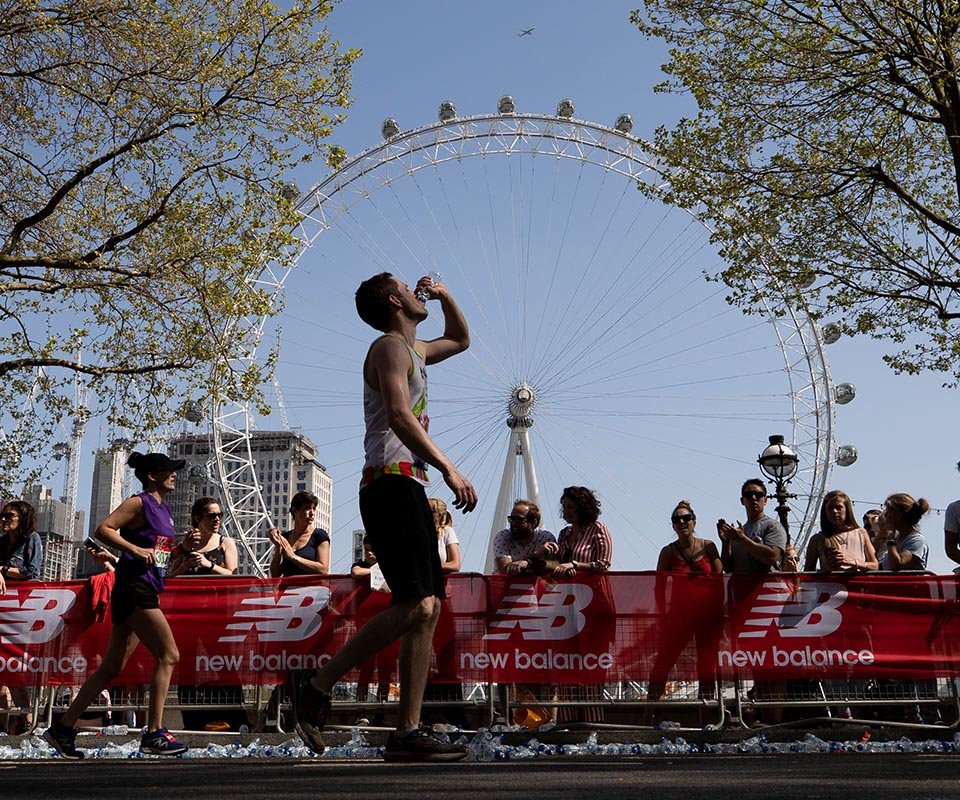MARATHON TRAINING AND RACING TIPS

Mastering your pace during a half marathon or marathon is a fine art that takes practise in training and discipline on race day. Experienced multi-distance racer and Runners Need Clapham Junction Manager Mark Speed explains how we can train for our target marathon time and maintain pacing:
How can you Measure your Marathon Pace in Training?
Runners are all different when it comes to marathon training. I use a HRM watch for pacing my runs. Running marathon-paced efforts plays a key role in letting your body and legs know what they need to do on the day; one session that I find works really well for this is 4-6 miles at a steady pace, followed by 10-12 miles at marathon pace, then finish on 4-6 miles at a steady pace again.
Some runners will measure marathon pace by heart rate and train within certain heart rate zones (however, many variables can affect your heart rate); others can use their half marathon time as a guide by doubling it and adding 15 minutes. Online there are also pace calculators where you can input other distances to see your predicted marathon time.
Yasso 800s can help indicate your marathon pace too, but this again may vary for some. In these sessions you take your target marathon time (let’s say it’s 3 hours and 30 minutes) and then convert this time into minutes and seconds (3 minutes and 30 seconds).
You then run 800m in this converted time. Once you are able to run 800m x 10 in 3 minutes and 30 seconds, leaving the same amount of time in-between each set for recovery, you should be able to run a marathon in 3 hours and 30 minutes.
Yasso 800s can be applied to any target marathon time (just remember that recovery time in-between each set must equal your converted target marathon time)
Does the Distance of your Race Affect how you Measure you Ideal Pace?
All race distances will generally require you to train your body for that specific distance. When I’m half marathon training, the sessions are tailored for running 13.1 miles and not 26.2.
I run at a faster pace during half marathon training than marathon training because the body and legs need to know what it will feel like on race day; if I attempted a marathon at my half marathon pace, I would not last the distance.
Does your Pace Remain Constant Throughout a Race or Should it Change at Certain Stages?
This will depend on the runner. Some may prefer even mile or kilometre splits throughout the race; others may want to do a negative split where the second half of the race is quicker than the first half.
If you get to the last few miles in your race and you’re feeling strong and confident, then push yourself; if you push hard too early then you may experience fatigue and heavy legs, which will result in slowing in pace and may force you to adjust your finishing time.
Generally I work on mile splits in all races up to and including half marathons, but in marathons I break it down into the first half and then work on the second half. I start most of my races slightly quicker than predicted, but generally settle into a rhythm and then work at staying at race pace after 3 miles.
How can you Improve your Target Marathon Time Whilst Minimising the Risk of Injuires?
Increasing the pace will generally be seen throughout your training schedule. As you progress through your selected schedule, you stress your body with key sessions to help it get used to running at a faster pace over a longer distance.
Generally, a high cadence (steps per minute) and not over-striding will help with a higher leg turnover and efficiency. Once you reach your taper period, you would ideally not be running many hard sessions and you should by now know what kind of shape you are in for the marathon.
Do not overdo it during the last few weeks as your hard training should have been done by this stage!
Ensure that you have scheduled rest and recovery days after hard or long sessions. Again, everyone is different but every runner will put their body through a lot of stress regardless of your target marathon time. Unfortunately, you can never rule out injuries, but you can be sensible and ensure that you listen to your body and minimise the risk of overtraining.
During a Marathon, How do you Know When to Push a Harder Pace and When to Slow Down?
Like many, I have had some disappointing marathons and some well-paced marathons.
One of the most memorable was in Malta, where we celebrated my friend’s 100th marathon. For me, this was just going to be an easy run of around 3 hours and 45 minutes to 4 hours and part of the festivities.
We kept the pace consistent up to 20 miles when we started to realise that my friend was on for a PB. He was tiring but still looked determined as I paced and encouraged him right to the finish line, where he broke 3 hours 15 minutes by 2 seconds and gained over a five-minute PB.
Pushing the pace in the later stages of a race, however, can be costly, but if you are feeling strong and feel that you have more in the tank, then go for it. You may find that you can hang on for shorter races, but when running half marathons and marathons you will notice the body tiring, which can result in poor running form, heavy legs, cramping and a reduced pace.
The more training that you do specific to your event, the more prepared you will be when you reach the starting line.
You May Also Like:



